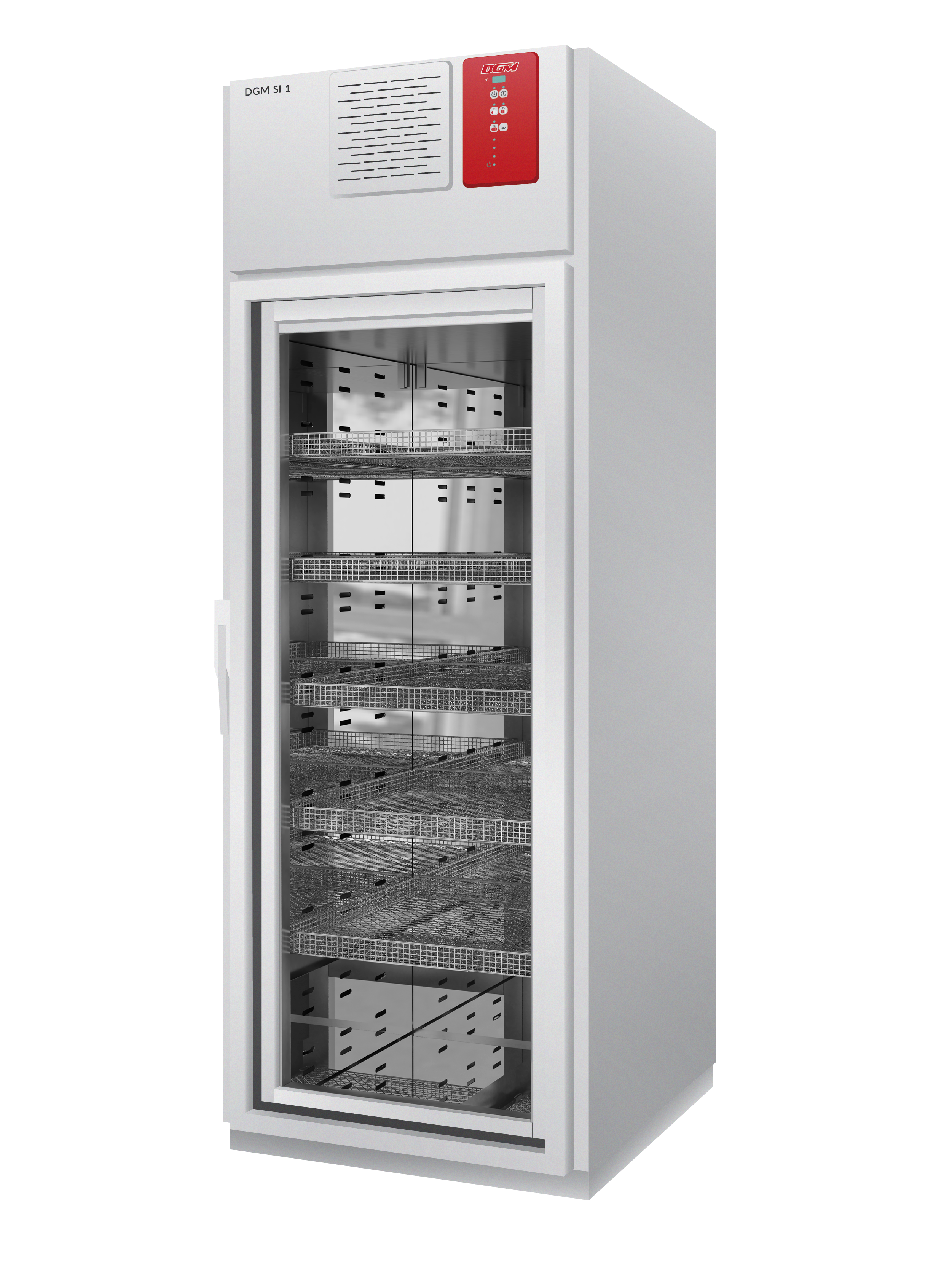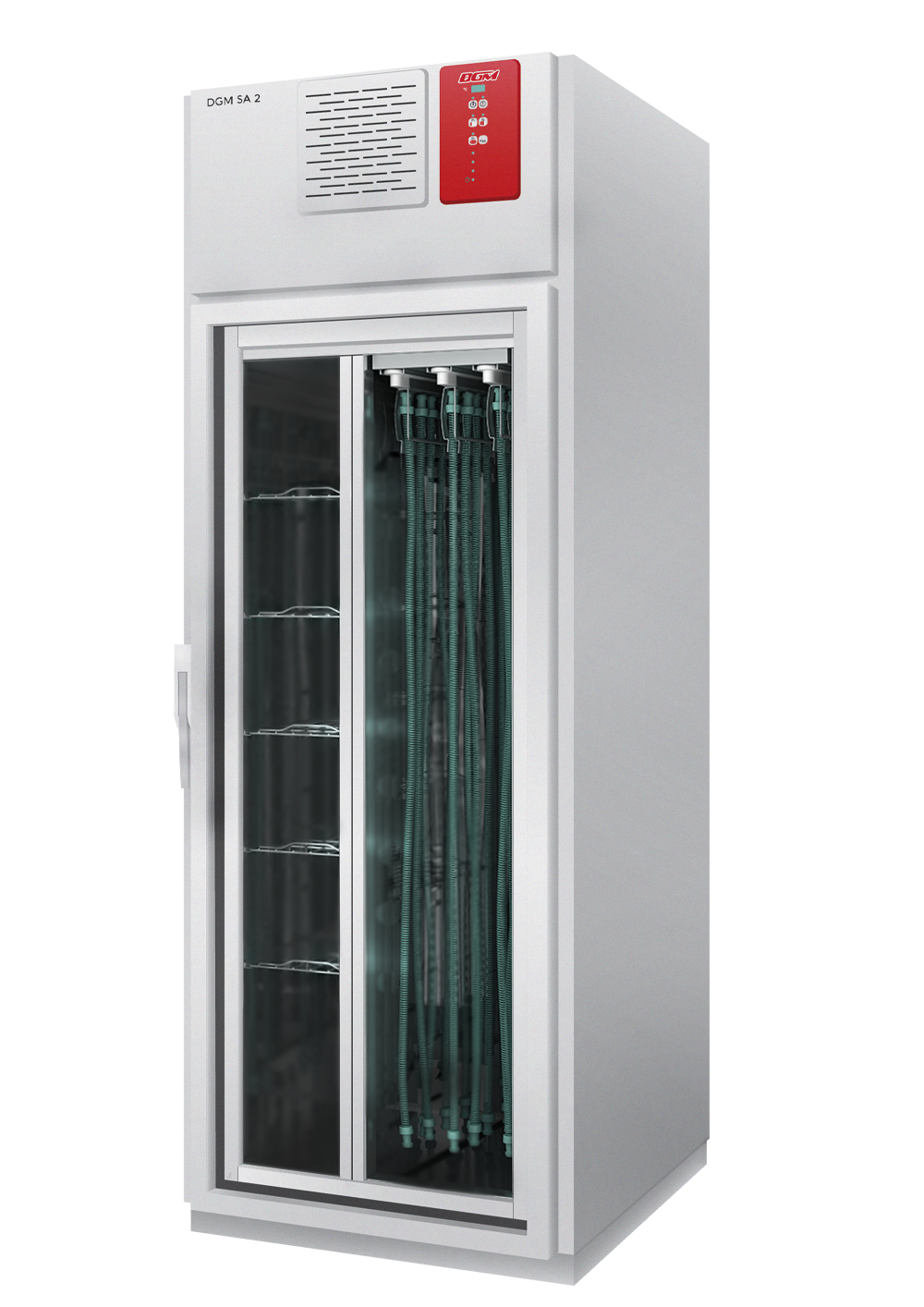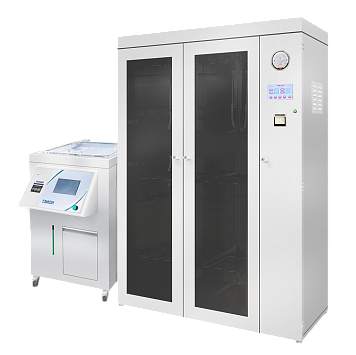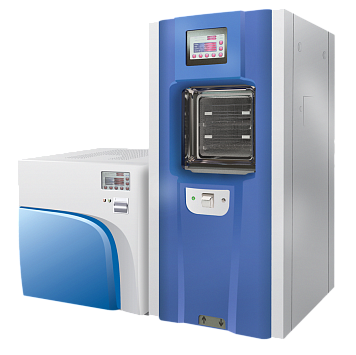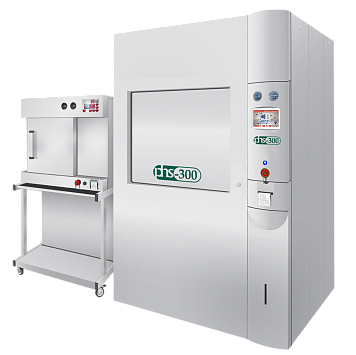Drying cabinets appeared in the second half of the 19th century. In 1899, Braatz used a double-walled copper drying cabinet to dry the dressings after sterilization. L. Pasteur offered a fire-heated metal cabinet; thermal insulating material was laid between the double walls of the cabinet; the holes in the upper part were used for the thermometer and the outlet of hot air.
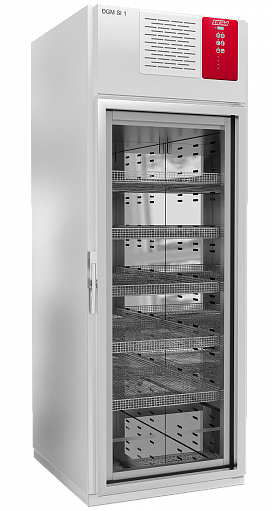
Scope of application
A drying cabinet is electrical equipment, the principle of which is the ability to maintain a constant operating temperature inside the chamber of up to 500 degrees. Due to high heating temperatures, the scope of application of drying cabinets is quite extensive. The equipment is used in many areas of production, medicine, science and other fields. Depending on the purpose, they are used to work with samples, tools, dishes, clothes.
Research centers and laboratories use laboratory drying cabinets for a wide range of tasks:
-
drying of laboratory containers
-
sample preparation
-
studying the stability of materials when heated
-
detection of the presence of salts of heavy metals in food
-
heat treatment operations: evaporation, calcination, vulcanization, normalization, aging
-
storage of substances requiring a certain temperature regime
-
medicine – sterilization of medical instruments, destruction of bacteria, spores, fungi and other types of microorganisms
-
industry – firing glass, ceramics, metal, and other materials
-
agriculture – determination of the degree of grain moisture, drying, used as an alternative to moisture meters
Varieties and sizes
Drying cabinets are a working chamber equipped with one or two doors. The doors and the chamber are thermally insulated. Inside the chamber there are metal shelves with openings for the passage of heated air, the circulation of which is generally ensured by a fan. Signaling, control and monitoring elements are usually located at the top of the cabinet. In electric drying cabinets, the temperature in the working chamber is automatically controlled by thermocouples or a contact thermometer.
Depending on the purpose, there are two types of drying cabinets:
-
laboratory – characterized by the highest heating temperatures for working with a variety of test samples and compactness;
-
industrial – have large dimensions, high productivity and a wide temperature range, in individual cases can be additionally equipped with automated feeding of blanks into the drying chamber.
Principle of operation
The drying cabinet works according to the following principle:
-
the device is started up from the mains, heat from tape-type heaters is transferred to the chamber from a heat-insulating material from one or more sides
-
the built-in fan mixes air masses and evenly distributes heat, creating a blowing of the chamber contents
-
moisture contained in heated materials turns into vapor and is removed through the exhaust duct
-
the automation unit regulates the accuracy of the chamber heating, as well as the duration of maintaining a set temperature
Types of drying equipment
According to the principle of operation, drying cabinets are divided into following types:
-
vacuum – the chamber is heated without the presence of air, it is pumped out with a pump. Heating range: 5–250 degrees, there is an option of heat treatment, drying, sterilization, and moisture level determination
-
steam – used for sterilization with saturated steam supplied under pressure with the maximum temperature of 130 degrees
-
dry heat – used for drying, disinfection, evaporation, sterilization, heat treatment and light firing, heated to 300 degrees
-
convection (air) – able to quickly dry the chamber contents due to forced injection of heated air and ventilation, heated up to 350–400 degrees
-
gas (with a protective atmosphere) – operating on the principle of convection with the exception that nitrogen, argon or other gas is supplied instead of air
-
bactericidal – sterilize with high temperatures while disinfecting with quartz or other lamps
-
infrared – used to determine the degree of moisture content of products and to evaporate excess moisture using heat and air circulation, heated to 100 degrees
Selection criteria
The selection of drying equipment is based on basic and additional technical characteristics.
Main technical characteristics:
-
the operating temperature range, which is the main parameter that determines the selection
-
the volume of the drying chamber, which depends on the size of samples to be treated and the number of instruments, containers or raw materials to be loaded into the chamber at a time
-
operating modes – the more modes the equipment has, the more functional it is
-
the heating rate to maximum temperatures
-
the temperature stability inside the chamber
-
electric power consumption
-
the device operation in an automatic mode – support of thermal mode, convection
-
the accuracy of thermoregulation, the option to program modes and connect the equipment to a computer
Additional selection criteria:
-
dimensions, weight
-
power supply parameters
-
chamber accessories: pallets, hooks, shelves, hangers, grates
-
operation and configuration complexity



